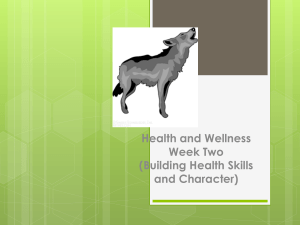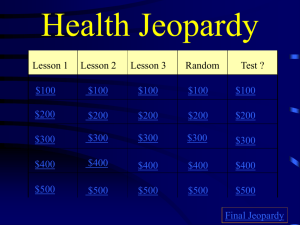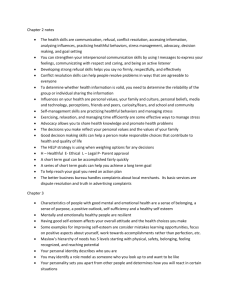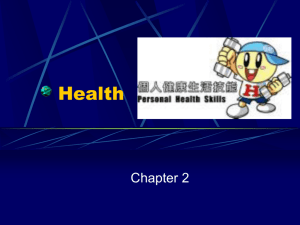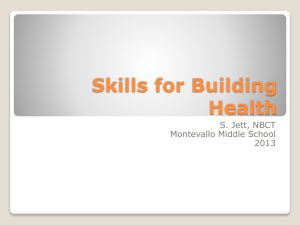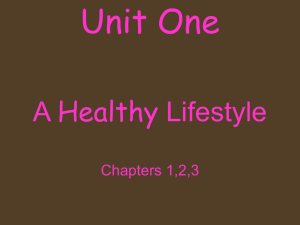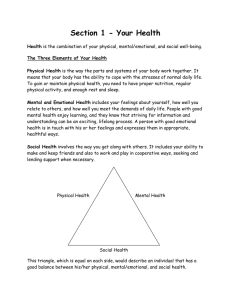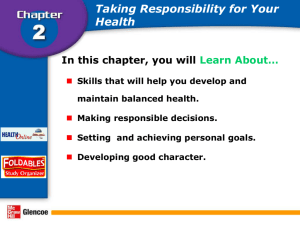Understanding Health and Wellness
advertisement
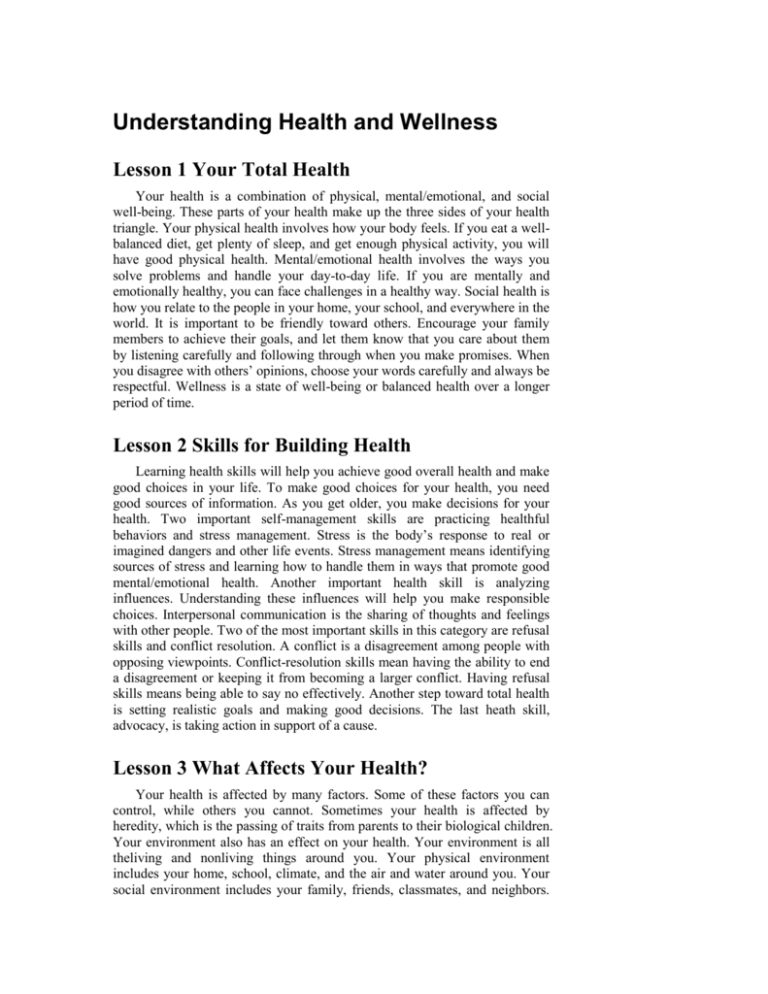
Understanding Health and Wellness Lesson 1 Your Total Health Your health is a combination of physical, mental/emotional, and social well-being. These parts of your health make up the three sides of your health triangle. Your physical health involves how your body feels. If you eat a wellbalanced diet, get plenty of sleep, and get enough physical activity, you will have good physical health. Mental/emotional health involves the ways you solve problems and handle your day-to-day life. If you are mentally and emotionally healthy, you can face challenges in a healthy way. Social health is how you relate to the people in your home, your school, and everywhere in the world. It is important to be friendly toward others. Encourage your family members to achieve their goals, and let them know that you care about them by listening carefully and following through when you make promises. When you disagree with others’ opinions, choose your words carefully and always be respectful. Wellness is a state of well-being or balanced health over a longer period of time. Lesson 2 Skills for Building Health Learning health skills will help you achieve good overall health and make good choices in your life. To make good choices for your health, you need good sources of information. As you get older, you make decisions for your health. Two important self-management skills are practicing healthful behaviors and stress management. Stress is the body’s response to real or imagined dangers and other life events. Stress management means identifying sources of stress and learning how to handle them in ways that promote good mental/emotional health. Another important health skill is analyzing influences. Understanding these influences will help you make responsible choices. Interpersonal communication is the sharing of thoughts and feelings with other people. Two of the most important skills in this category are refusal skills and conflict resolution. A conflict is a disagreement among people with opposing viewpoints. Conflict-resolution skills mean having the ability to end a disagreement or keeping it from becoming a larger conflict. Having refusal skills means being able to say no effectively. Another step toward total health is setting realistic goals and making good decisions. The last heath skill, advocacy, is taking action in support of a cause. Lesson 3 What Affects Your Health? Your health is affected by many factors. Some of these factors you can control, while others you cannot. Sometimes your health is affected by heredity, which is the passing of traits from parents to their biological children. Your environment also has an effect on your health. Your environment is all theliving and nonliving things around you. Your physical environment includes your home, school, climate, and the air and water around you. Your social environment includes your family, friends, classmates, and neighbors. Your family is an important influence on your life, shaping your cultural background, which is the beliefs, customs, and traditions of a specific group of people. The media also can have an influence on your behavior. It is important to evaluate, or determine the quality, of everything you see, hear, or read in order to make the best health choices. Lesson 4 Health Risks and Your Behavior Risk is a part of life. A risk is the chance that something harmful may happen to your health or wellness. Some risks are easy to identify, while others are hidden. Risk behaviors are actions or choices that may harm you or others. Risk behavior has consequences. Some of these consequences can hurt only you, while others may hurt you and others. Sometimes one risk is added to another. Cumulative risk is when one factor adds to another to increase danger. The greater the number of risks, the greater the chances for serious consequences. There are ways to avoid or reduce risks. Prevention and abstinence are two of these. Prevention means taking steps to avoid something. Practicing healthful behaviors and watching for possible dangers are parts of prevention. Abstinence is an important part of prevention, too. Abstinence is the conscious, active choice not to participate in high-risk behaviors. You take an active part in your health by avoiding risk behaviors.
